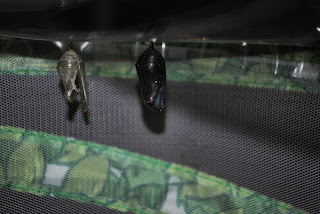I knew we needed help managing our finances and I believe I came across a jewel when I checked out the book "America's Cheapest Family Gets You Right on the Money" by Steve and Annette Economides. See? I'm already saving money by checking books out from the library instead of purchasing them.
(This only works if I remember to take the books back on time, but I'll save that for another post.)
Like so many other books on money management, this book has chapters on budgeting, debt, vehicles, housing, medical, savings and investment and vacations.
Some of the chapters you may not see in other books were kids and money, clothing, utilities, groceries and my favorite--- ATTITUDES.
The authors gave me practical everyday ideas that I can start doing now to save money. Yes, me. The once lackadaisical and avoidie girl has to get a tight grip on things and this book was a great place to start.
The first place I need to start is with our budget. Steve and Annette advice to sit down often and update your family's budget because it changes. This may be why I always felt like I was failing at the whole budget thing. It was constantly changing and I had this idea that that meant I wasn't doing it correctly... so I avoided it altogether.
They also recommend having the husband and wife do it together. A definite goal of mine. But how do I make it my husband's goal, too? We're never on the same page. If we sat down and discussed things, we would be able to remind each other of the goals we set together.
The authors and their family buy most of their clothing from thrift stores. It takes time to search but the amount of money they save is well worth it. They also shop on the clearance racks and major sales. Annette purchases clothes she finds for a steal seasons before her children will need them. Planning and organization is key here.
Steve and Annette give their children an allowance. It is based on the daily tasks that each child is responsible for doing and if it is done without reminding and with the right attitude. Their days are broken up into four sections and when the child completes each section, they receive a check mark on their "Time Card." At the end of the week, the checks are added up and then multiplied by the amount each child receives per check. Depending on the age of the child, it ranges anywhere from 5-20 cents per check.
There are so many valuable ideas on how to teach your children to responsibly manage money in this book. I've been inspired to implement plans and work with our children. Currently, they each have piggy banks and Matthew has set goals and saved his money to reach the goal. Good, yes. But, we can do better. I've been saving our spaghetti jars and we'll be setting up a save, give and spend jar for each of them.
The right attitude helps. Instead of looking at what you can't have, look at what you can. For example: Instead of looking at the fact that we couldn't go to Texas Roadhouse for dinner, I'm going to look at that beautiful home we'll be able to purchase after our careful planning and saving pays off.
Things I already do to save money. They were ideas that were given in the book and I have been doing them for years. Maybe I am not as bad as I thought.
#1 Reduce trips to the store. Nailed it-- I don't even like to go to the store at all. Umm... I don't think that's what they mean.
#2 Menu Planning. Having a menu and a corresponding list saves you money when you take fewer trips to the store and helps eliminate impulse purchases. I also can tell my two kids, if it's not on my list, we don't need it. If it's something they would truly like and can remember it before we take our next shopping trip. I'll add it to my list. (Hasn't happened yet.)
#3 Waiting and Searching. When my family or I want something, we research it and try to find the best deal. My hubby is awesome at researching and is getting better at finding deals instead of just taking what he can find.
#4 Vacationing and Saving on Food. Four years ago, Matthew and I went on a vacation together. We were gone for 5 days and we only ate out four times. I made homemade rolls, cookies, and assorted goodies. We stopped at the store and bought bread, milk, lunch meat, snacks, cereal, bagels and cream cheese. This was huge for me because I love, love, love to eat out. But, when I plan ahead and make foods that are more "treat like", it helps. I was very pleased with myself after that trip.
Each chapter concludes with three starting points. Beginners, intermediates, and experts can all look forward to knowing where to begin.
My favorite part about this book...
It's like I sat in a coffee shop with Steve and Annette. We talked about family, friends and finances. They were so kind and didn't make me feel ignorant or ashamed. I got useful tools that I began to use right away.
That's just the way conversations with friends go.
They support you, encourage you and help you grow.










































